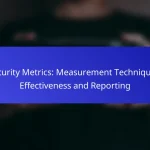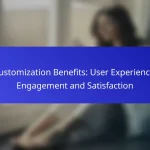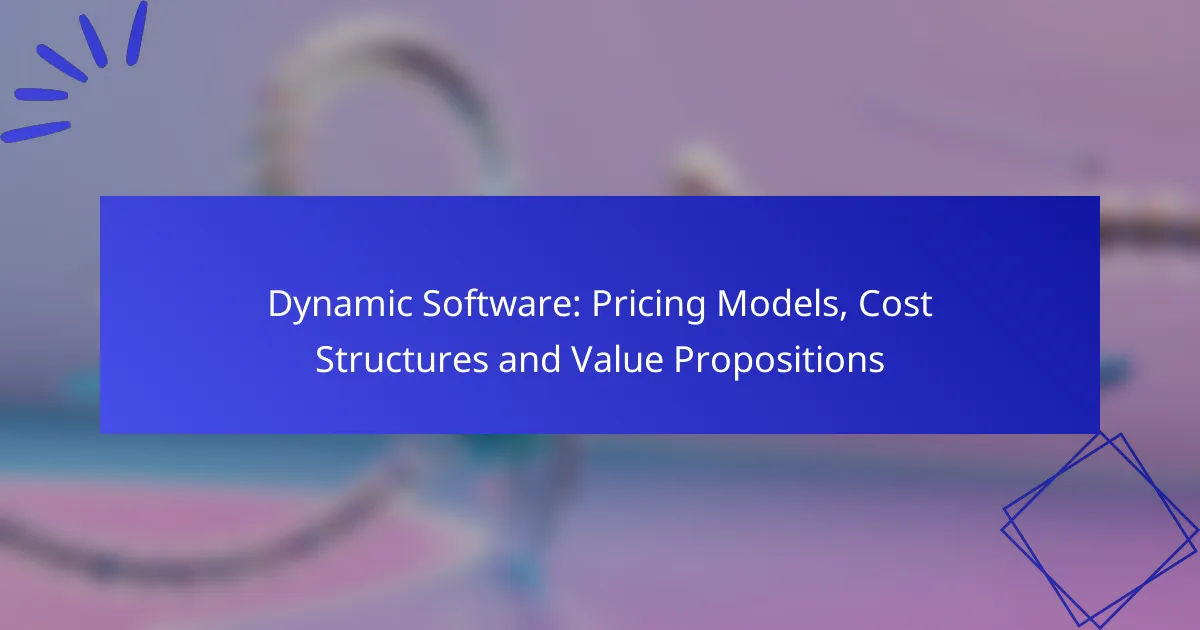The total cost of ownership (TCO) for dynamic software represents the comprehensive financial impact of acquiring, deploying, and maintaining the software throughout its lifecycle. This calculation includes not only the initial purchase price but also ongoing expenses such as support, training, and infrastructure costs, enabling organizations to make informed financial decisions regarding their software investments.

What is the total cost of ownership for dynamic software?
The total cost of ownership (TCO) for dynamic software encompasses all costs associated with acquiring, deploying, and maintaining the software over its lifecycle. This includes not only the initial purchase price but also ongoing expenses such as support, training, and infrastructure costs.
Definition of total cost of ownership
Total cost of ownership is a financial estimate that helps organizations understand the complete cost of a software solution beyond its initial price tag. It provides a comprehensive view of all expenses incurred throughout the software’s operational life, enabling better budgeting and financial planning.
By considering TCO, businesses can make more informed decisions when selecting software solutions, ensuring they account for hidden costs that may arise later.
Components of total cost of ownership
The components of TCO for dynamic software typically include several key areas: initial acquisition costs, implementation costs, ongoing maintenance, and operational expenses. Initial acquisition costs cover the purchase price or licensing fees, while implementation costs may involve installation, configuration, and customization.
Ongoing maintenance includes support contracts, updates, and training for staff. Operational expenses can encompass hardware requirements, cloud service fees, and any additional tools needed to run the software effectively.
- Initial acquisition costs
- Implementation costs
- Ongoing maintenance
- Operational expenses
Importance of total cost of ownership
Understanding the total cost of ownership is crucial for organizations to evaluate the true value of dynamic software solutions. By analyzing TCO, companies can identify potential cost savings and avoid overspending on software that may not meet their long-term needs.
Additionally, TCO analysis can aid in comparing different software options, allowing businesses to choose solutions that offer the best balance of functionality and cost-effectiveness. This strategic approach helps in aligning software investments with overall business goals.
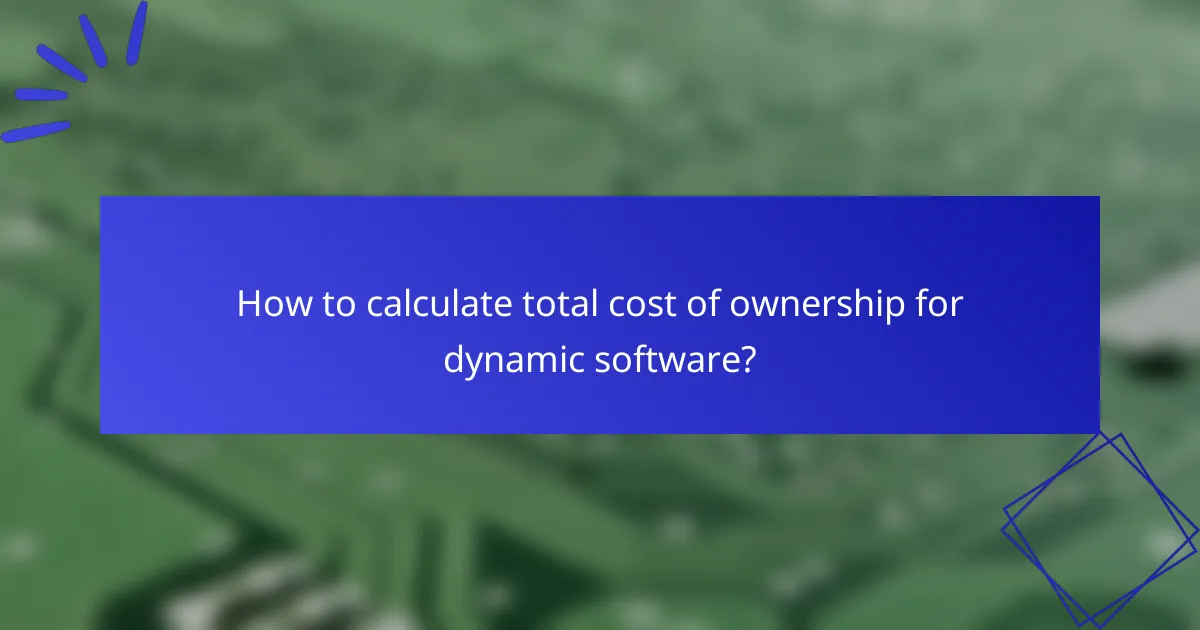
How to calculate total cost of ownership for dynamic software?
To calculate the total cost of ownership (TCO) for dynamic software, consider all direct and indirect costs associated with its acquisition, implementation, and ongoing use. This includes initial purchase costs, maintenance fees, training, and any potential downtime or productivity losses.
Calculation methods overview
There are several methods to calculate TCO, each varying in complexity and detail. Common approaches include the simple cost summation method, which adds up all expenses, and the more detailed lifecycle costing method, which accounts for costs over the software’s entire lifespan. Selecting the appropriate method depends on the specific context and the level of accuracy required.
Another approach is the activity-based costing method, which allocates costs based on actual usage and activities associated with the software. This can provide a more nuanced view of costs, especially in environments with fluctuating usage patterns.
Step-by-step calculation process
Begin by identifying all relevant cost components, including initial purchase price, installation fees, and ongoing maintenance costs. Next, estimate indirect costs such as training expenses and potential productivity losses due to software issues or downtime.
Once all costs are identified, categorize them into fixed and variable costs. Fixed costs remain constant regardless of usage, while variable costs fluctuate based on how the software is utilized. Finally, sum these costs over the expected lifespan of the software to arrive at the total cost of ownership.
Tools for calculating total cost of ownership
Various tools are available to assist in calculating TCO, ranging from simple spreadsheets to specialized software solutions. Spreadsheet programs like Microsoft Excel can be customized to track costs and perform calculations, making them a flexible option for many businesses.
For more complex needs, dedicated TCO calculators and software tools can provide detailed analyses and reporting features. These tools often include templates and built-in formulas to streamline the calculation process, helping organizations make informed decisions about their software investments.

What are the implications of total cost of ownership?
Total cost of ownership (TCO) encompasses all costs associated with acquiring, operating, and maintaining software over its lifecycle. Understanding TCO helps organizations make informed financial decisions and evaluate the true value of software investments.
Impact on budgeting decisions
When considering TCO, organizations must account for both initial and ongoing expenses, including licensing fees, maintenance costs, and potential upgrades. This comprehensive view enables better alignment of software spending with overall budget constraints.
For example, if a software solution has a low initial cost but high ongoing maintenance fees, it may strain future budgets. Therefore, organizations should analyze TCO to avoid unexpected financial burdens.
Influence on software selection
TCO significantly influences software selection by encouraging organizations to look beyond upfront costs. Decision-makers should evaluate long-term expenses, including support, training, and potential downtime, which can impact productivity and revenue.
For instance, a more expensive software option with robust support and lower maintenance costs may be more economical in the long run compared to a cheaper alternative that requires frequent updates and troubleshooting.
Long-term financial planning considerations
Incorporating TCO into long-term financial planning is essential for sustainable growth. Organizations should forecast future software needs and associated costs to ensure they remain within budget while meeting operational demands.
Additionally, regularly reviewing TCO can help organizations adapt to changing technology landscapes and avoid obsolescence. This proactive approach allows for strategic investments that align with business goals and financial health.
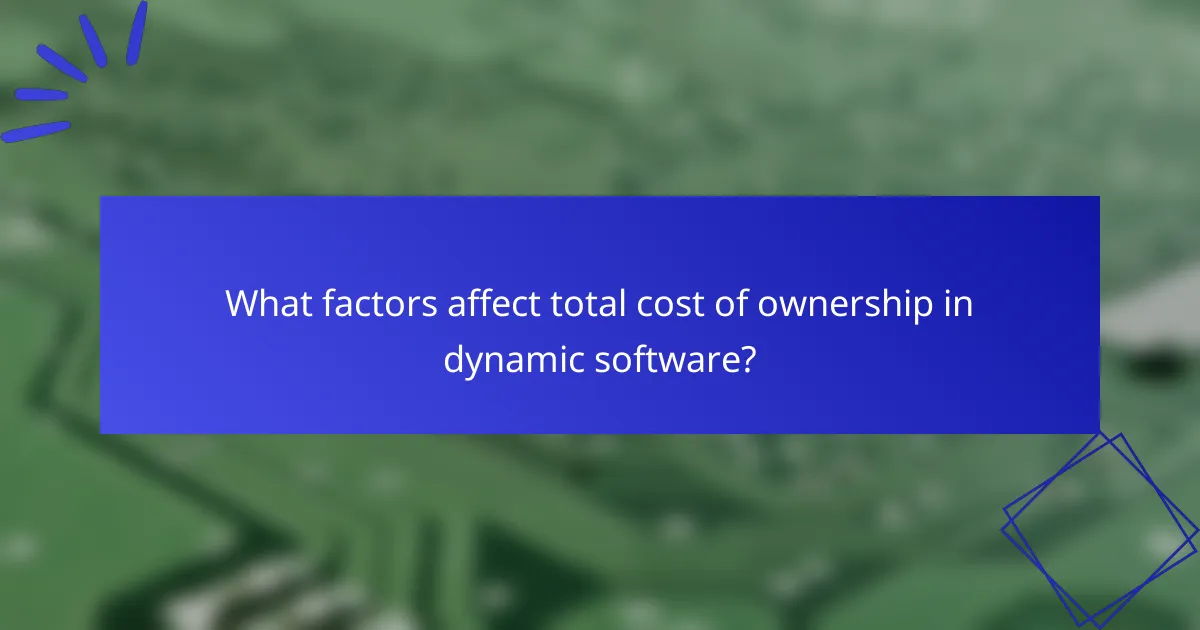
What factors affect total cost of ownership in dynamic software?
The total cost of ownership (TCO) in dynamic software is influenced by several key factors, including licensing models, maintenance and support costs, and scalability and integration expenses. Understanding these elements helps organizations make informed decisions about software investments and long-term budgeting.
Licensing models
Licensing models significantly impact the TCO of dynamic software. Common models include subscription-based, perpetual licenses, and usage-based pricing. Subscription models often have lower upfront costs but can accumulate higher expenses over time, while perpetual licenses require a larger initial investment but may offer long-term savings.
When evaluating licensing options, consider the expected usage and the duration of the software’s lifecycle. For instance, businesses with fluctuating needs might benefit from a subscription model, while those with stable requirements may find perpetual licenses more economical.
Maintenance and support costs
Maintenance and support costs are ongoing expenses that can substantially affect the TCO. These costs typically include software updates, technical support, and potential training for users. Organizations should budget for these expenses, which can range from a few hundred to several thousand dollars annually, depending on the software’s complexity and the level of support required.
It’s crucial to assess the vendor’s support offerings and any additional fees for premium services. Opting for a vendor with comprehensive support can reduce downtime and enhance productivity, ultimately leading to lower overall costs.
Scalability and integration expenses
Scalability and integration expenses are vital considerations when calculating TCO for dynamic software. As a business grows, its software needs may evolve, requiring additional features or integrations with existing systems. These enhancements can incur significant costs, including development, testing, and implementation fees.
Organizations should evaluate the software’s ability to scale and integrate with current and future technologies. Investing in flexible solutions that accommodate growth can prevent costly overhauls later. Additionally, consider potential hidden costs associated with integrating new software into existing workflows, which can impact overall efficiency and expenses.

How does total cost of ownership vary by industry?
Total cost of ownership (TCO) can significantly differ across industries due to varying operational needs, regulatory environments, and technology adoption rates. Understanding these differences helps organizations budget effectively and make informed decisions about dynamic software investments.
Dynamic software in healthcare
In healthcare, the TCO of dynamic software often includes costs related to compliance with regulations like HIPAA in the U.S. and GDPR in Europe. These regulations necessitate robust security features, which can increase initial software costs but ultimately reduce risks associated with data breaches.
Healthcare organizations must also consider ongoing training for staff and integration with existing systems, which can add to the TCO. For example, a hospital might spend tens of thousands of dollars annually on software updates and training sessions to ensure compliance and efficiency.
Dynamic software in finance
The finance industry faces unique TCO considerations, particularly due to stringent regulations such as the Dodd-Frank Act in the U.S. and MiFID II in Europe. These regulations require financial institutions to invest in software that can handle complex reporting and risk management, leading to higher upfront costs.
Additionally, ongoing maintenance and the need for real-time data analytics can further elevate TCO. Financial firms often allocate a significant portion of their budgets—potentially in the hundreds of thousands of dollars annually—toward software that ensures compliance and enhances decision-making capabilities.
Dynamic software in retail
In retail, TCO is influenced by the need for software that manages inventory, customer relationships, and sales analytics. Retailers often face fluctuating costs based on seasonal demand, which can affect software licensing and operational expenses.
Moreover, integrating dynamic software with e-commerce platforms and point-of-sale systems can lead to additional costs. Retailers should budget for both initial setup and ongoing costs, which can range from a few thousand to several tens of thousands of dollars annually, depending on the scale of operations and the complexity of the software solutions implemented.
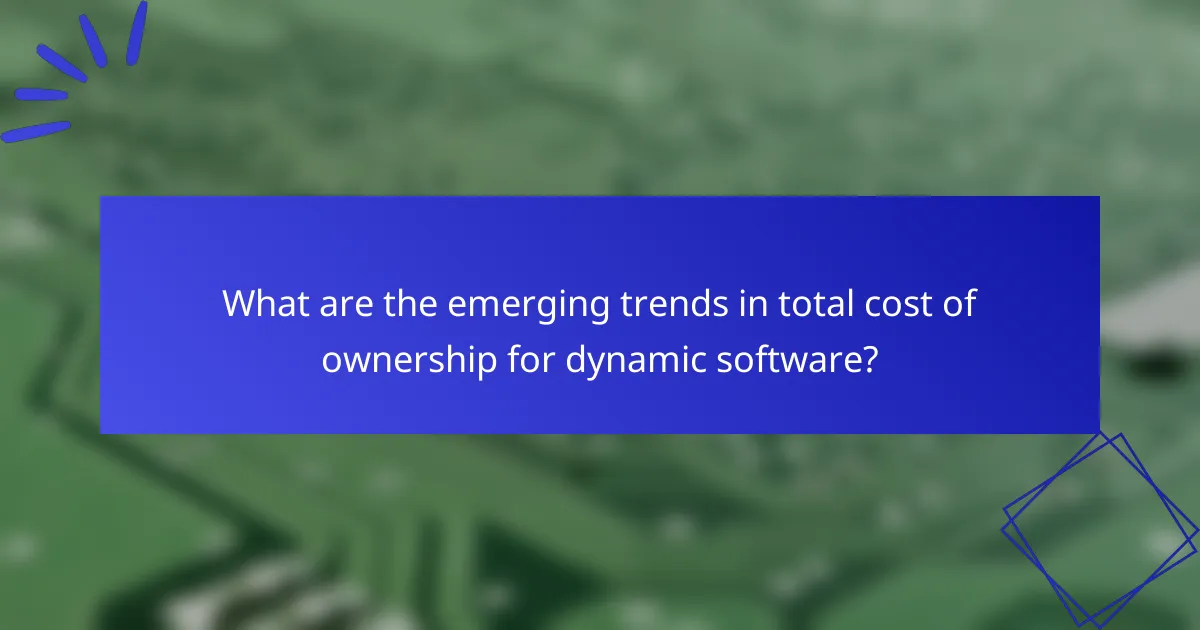
What are the emerging trends in total cost of ownership for dynamic software?
Emerging trends in total cost of ownership (TCO) for dynamic software focus on optimizing costs through automation, cloud solutions, and subscription models. Organizations are increasingly evaluating not just initial expenses but also long-term operational costs, including maintenance and scalability.
Increased focus on cloud-based solutions
Cloud-based solutions are becoming a significant trend in TCO analysis for dynamic software. These platforms often reduce upfront costs and provide flexible pricing models, allowing businesses to pay only for what they use. This shift can lead to lower overall costs, especially for small to medium-sized enterprises.
However, organizations must consider potential hidden costs, such as data transfer fees and compliance expenses. Regularly reviewing cloud service agreements can help mitigate unexpected charges and ensure that the chosen solution remains cost-effective.
Adoption of subscription models
Subscription models are increasingly popular as they allow businesses to spread costs over time rather than making large upfront investments. This approach can improve cash flow and make budgeting easier. However, it’s crucial to assess the long-term implications of these recurring costs on TCO.
Companies should analyze the total expenditure over the subscription period, including potential price increases and the impact of switching providers. Understanding these factors can help businesses make informed decisions about their software investments.
Emphasis on automation and efficiency
Automation is a key trend that can significantly reduce TCO by minimizing manual processes and increasing operational efficiency. Dynamic software that incorporates automation features can lead to faster deployment and reduced labor costs.
Organizations should evaluate how automation can streamline their workflows and identify areas where efficiency gains can be realized. Investing in training for staff to effectively use these automated tools can further enhance cost savings.
Integration with existing systems
Integrating dynamic software with existing systems is essential for minimizing TCO. Effective integration can reduce redundancy and improve data flow, leading to better decision-making and lower operational costs. Businesses should prioritize solutions that offer seamless integration capabilities.
When evaluating software options, consider the compatibility with current systems and the potential costs associated with integration. A well-planned integration strategy can significantly enhance the overall value of the software investment.
